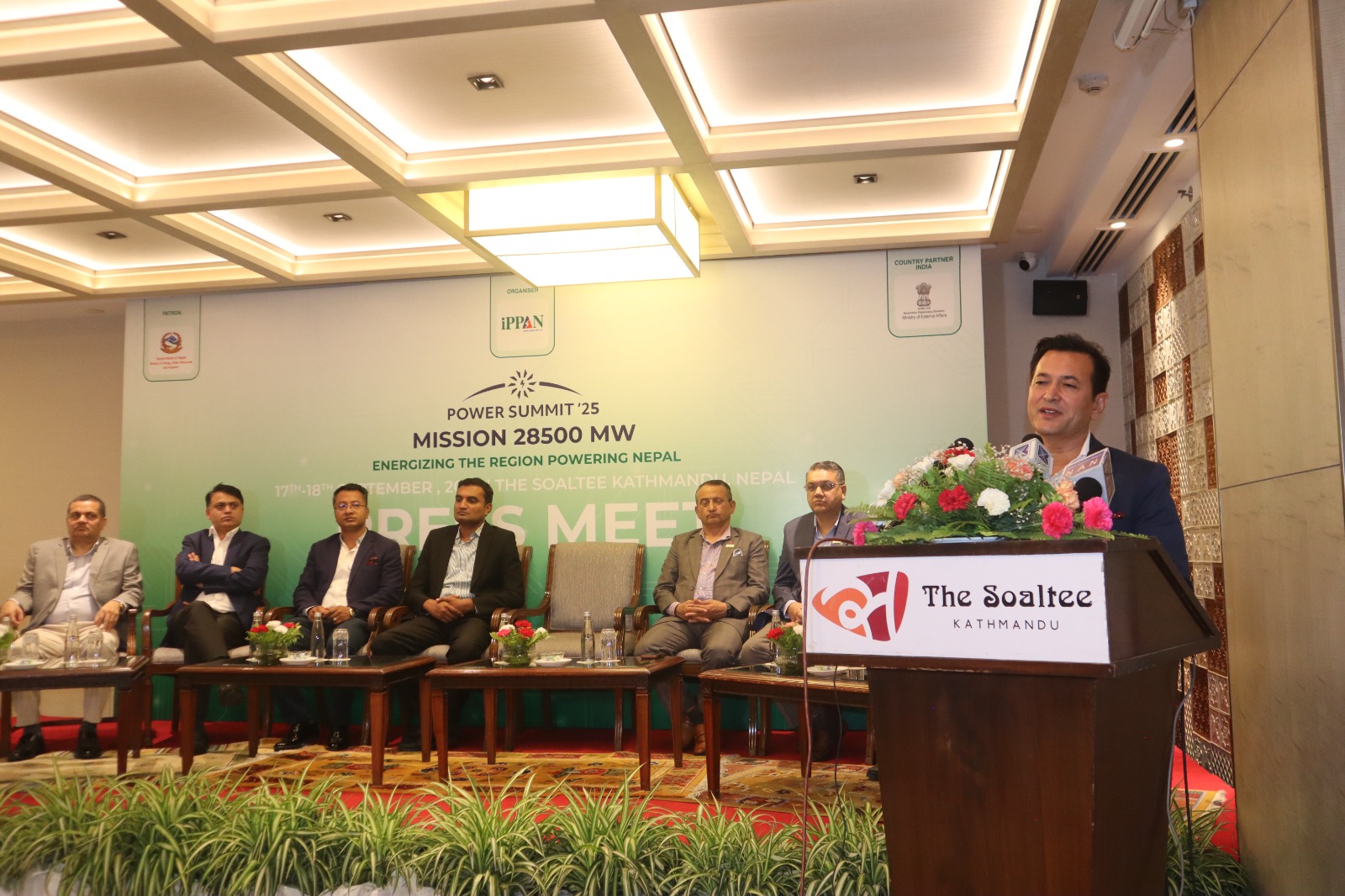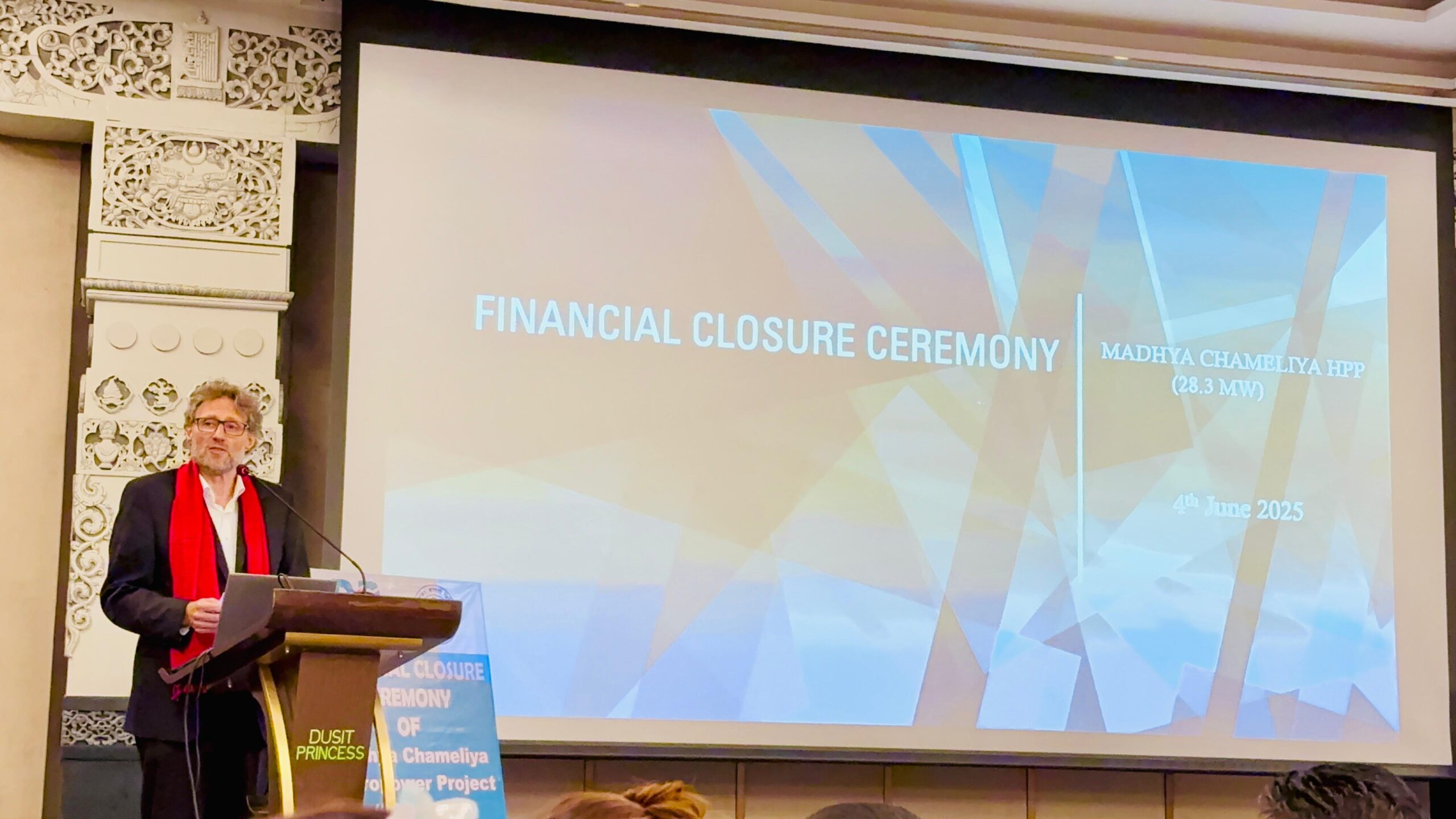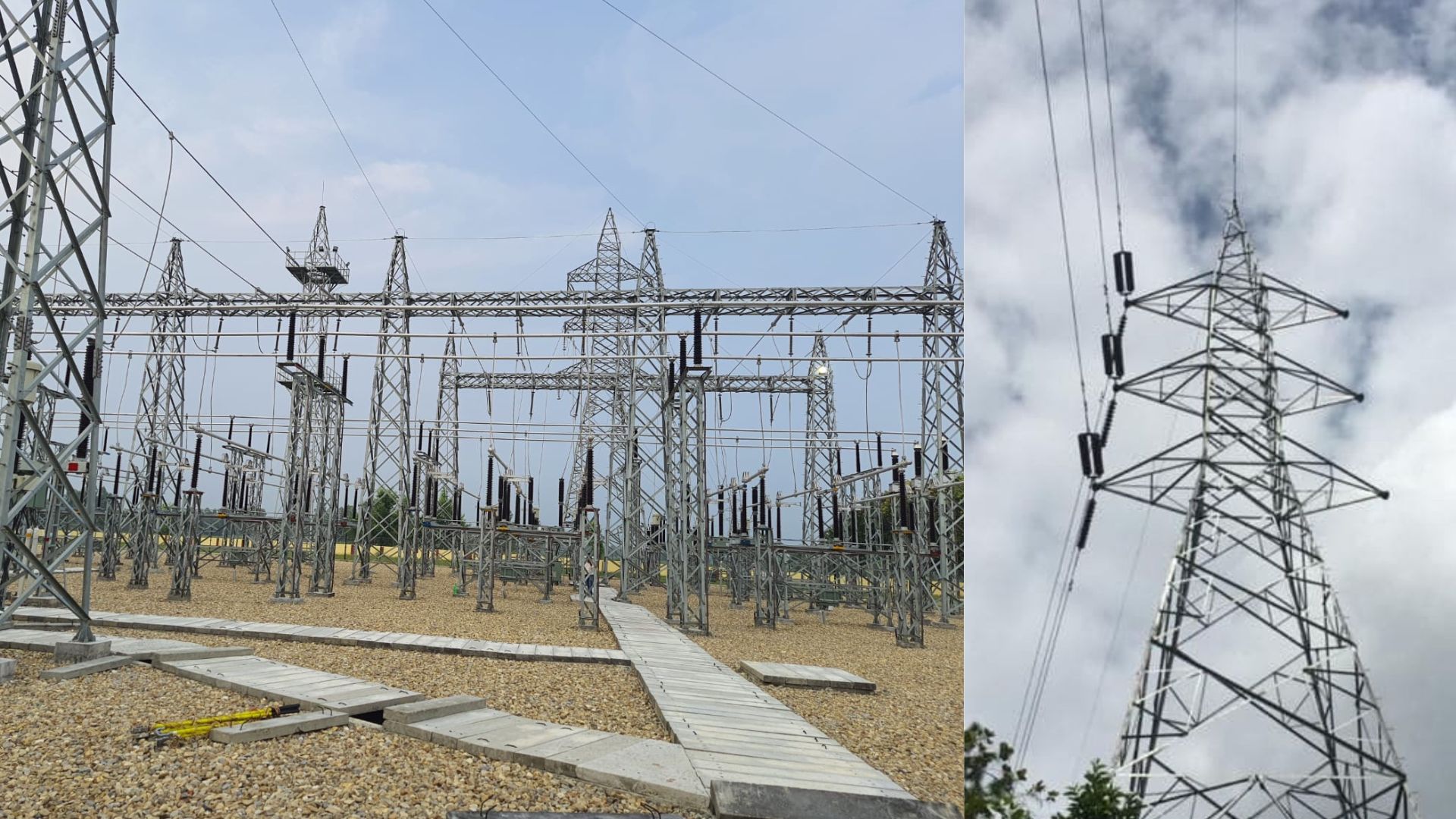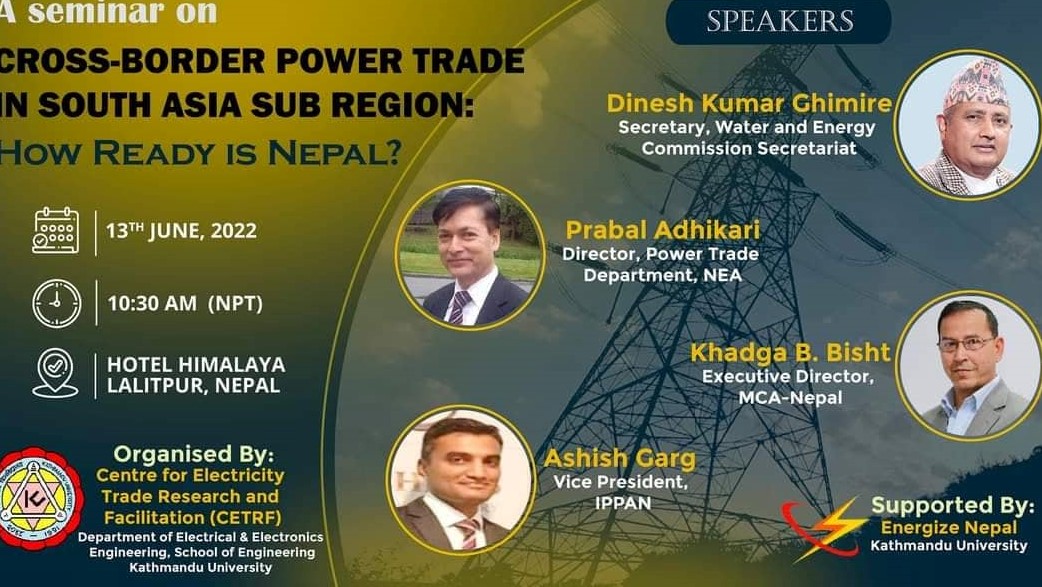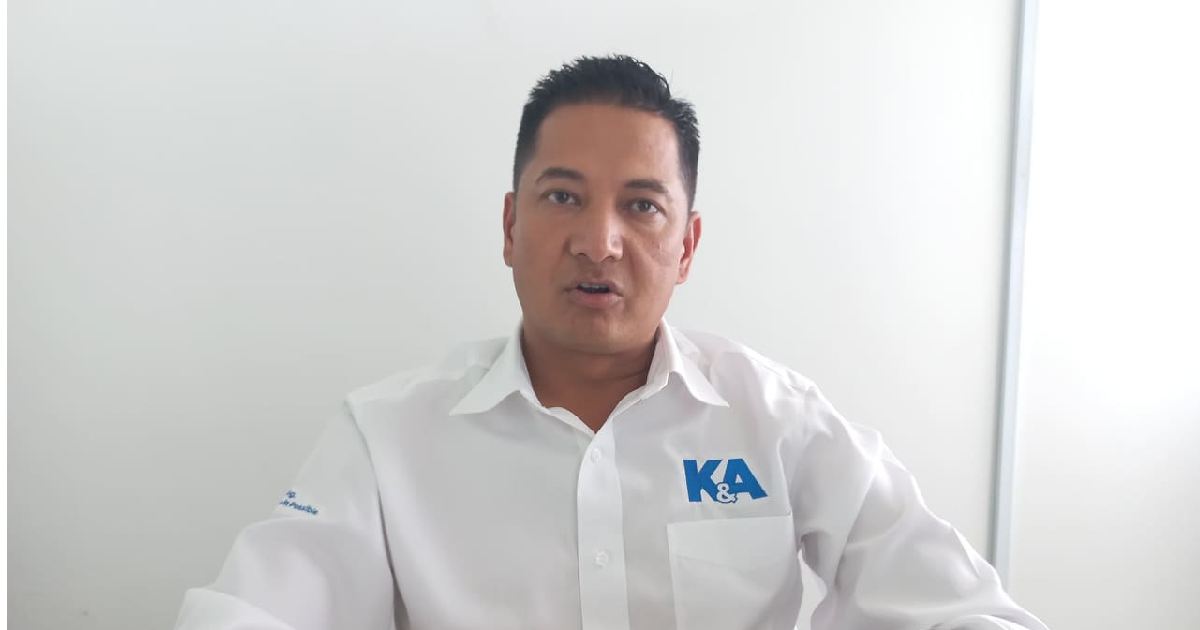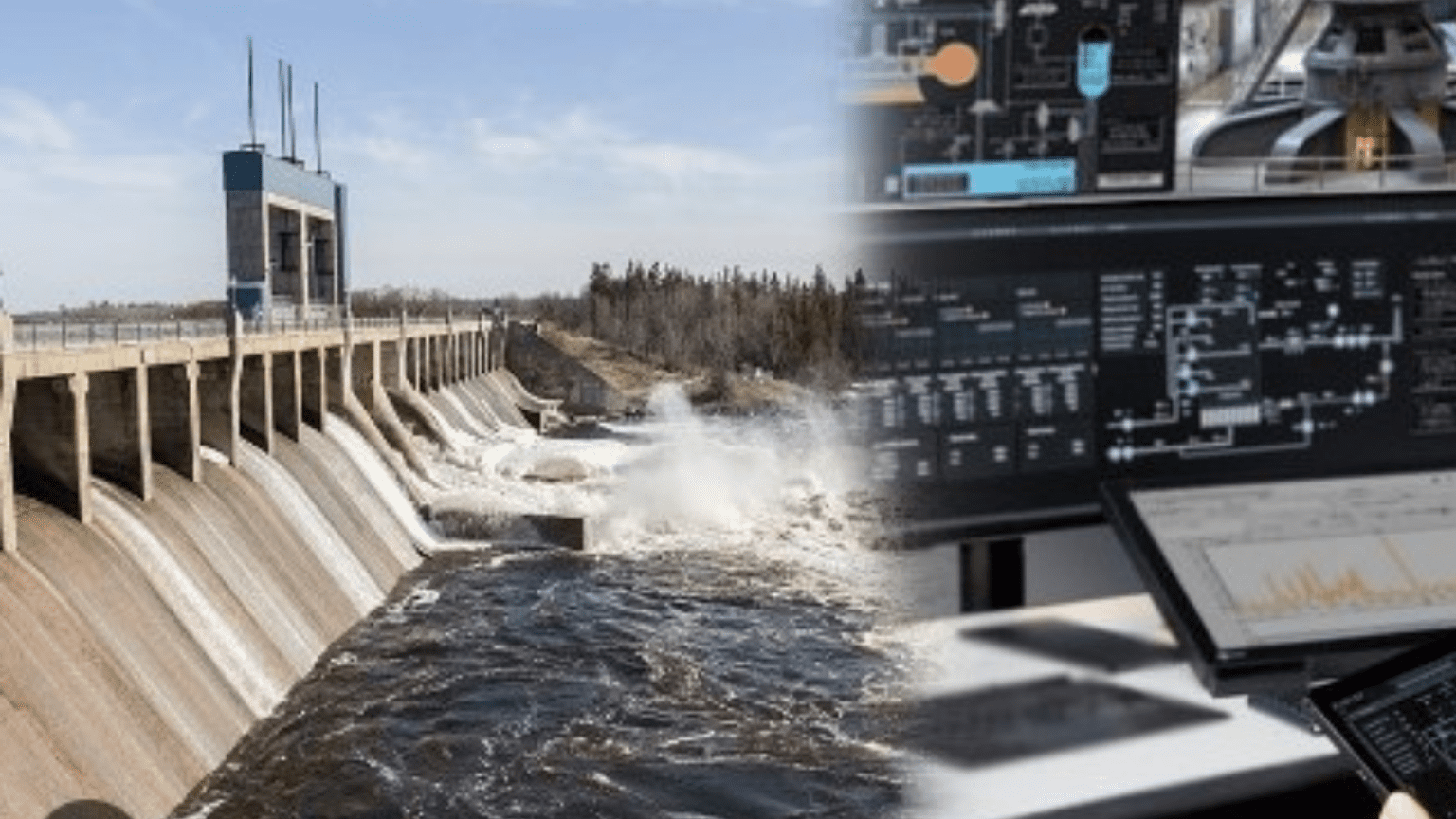
KATHMANDU: The promoter Swetaganga Hydropower Company had to construct a 23 km transmission line by itself to bring the power of the 28.1 MW lower Likhu hydropower project at Ramechhap to the 220 KV new Khimti substation invested by the Sanima Group.
Due to geographical difficulties, there were many problems in constructing the transmission line from the project’s power plant Ratmate Bokse to the new Khimti substation at Devitar. Another big problem came in the process of pulling the wire from one tower to another tower of the transmission line. There was a river somewhere along the route of the transmission line, and there was a remote, slope hill somewhere, so it was a compelling situation to work at the risk of life.
There was a lot of difficulty in pulling wires from one tower to another on such a route. However, Ishtar India Company, which got the contract for the construction of the transmission line, worked with the help of drones for the pilot wire connection work.
He successfully completed the task of pulling the rope from one tower of the transmission line to the other tower before pulling the wire using drone technology. And, the work of pulling the wire of the transmission line was done easily. The general manager of the company, Bhojraj Paudel, says that they were able to complete the work of the transmission line with the help of modern drone technology amid geographical difficulties.
“The route of the transmission line made to bring the electricity generated by our project to the new Khimti substation was geographically very difficult,” he says. Modern drone technology proved to be very useful for pulling the rope before pulling the wire from one tower to another tower with the help of modern drone technology in difficult terrain. He also said that drone technology was used this time because there is a high risk of damage due to hitting the rocks while pulling the wires of the high-capacity transmission line.
“Especially, before pulling the wire across the river, the rope must be strung. At that time, drones are used to pull the rope,” he said. He said that in some places in slope rocks where people cannot go, ropes were pulled with the help of drones, and wires were pulled with the help of the same ropes.
In order to build the transmission line that will bring the electricity of Lower Likhu project, which started commercial electricity production from last Kartik to the new Khimti substation, the wire was pulled with the help of drones in complex and difficult places.”It is very difficult to pull the wire of the transmission line in some terrain,” he says. In some places of Lower Likhu, wire pulling was done with the help of drones.
Recently, with the help of drones, it has become easy to pull the wires of the transmission lines through which electricity flows in hydropower projects. However, mandatory permission must be obtained from the relevant district administration police office to use drones for transmission line work. General Manager Poudel says that due to procedural hassles, there is a problem in using it even in wire-pulling work. Like the use of drones in the transmission line of Tatlo Likhu, the use of new information technology is increasing in the development of hydropower projects.
Not only the use of drones in the construction of power transmission lines but tunnel boring machines (TBMs) used to dig tunnels for large multi-purpose irrigation projects and hydropower projects are also considered a new technology. TBM is now used in many multi-purpose infrastructure projects. This technology has been used in multi-purpose irrigation projects being built especially for the purpose of irrigation and hydropower generation. It took only 9 years to dig the 26 km tunnel of the Melamchi water supply project using the old drill and blast technology. However, it did not take even 2 years to dig the 12.2 km tunnel of the Bheribabai Multi-Purpose Irrigation Project.
As TBM was used to dig the tunnel of this project, the work was completed before the target. Of course, the use of new types of modern technology is playing a very big role in reducing time and cost. In Bheribabai, the TBM machine is used in many countries of the world, and because there were less disputes, the tunnel was dug in a short period of time.
However, due to the adoption of old technology in Melamchi, the work of digging tunnels in Bheribabai has become possible at a fast pace. Along with the success of the TBM machine in the tunnel of Bheribabai, tunnel digging is being done with the help of the TBM machine in the Sunkasi Marin Diversion multi-purpose project.
Director of the Sunkosi Marine Diversion Multi-Purpose Project, Mitra Baral says that after seeing the effectiveness of TBM in Bheri Babai, tunnels are being dug using TBM in Sunkosi Marine Diversion Project as well.
“Seeing that TBM dug tunnels in a fast, efficient, and effective manner in the Bheri Babai project, the same technology is being used in Sunkosi Marine,” he says, “We are working with the goal of completing the 13.3 km tunnel of the project within two years.” According to him, the Sunkosi Marine tunnel is being dug with the help of TBM since the last week of last of Asoj .
The tunneling work of the project, which was laid in Falgun 2077, is now in full swing. The 13.3 km tunnel is being constructed by the TBM made by the American company Robbins. This is the second tunnel made by TBM in Nepal. Earlier, the tunnel was constructed through TBM in the Bheri Babai multi-purpose project. However, the tunnel of Bheri Babai is only 4.6 meters in diameter, while the tunnel in Sunkasi is 5.5 meters in diameter.
Ashish Garg, Vice President of the Independent Power Producers’ Association, Nepal (IPPAN), says that in recent years, hydropower projects have also been making maximum use of up-to-date information and technology.
The latest developments in the information technology sector are also being used in hydropower projects. However, compared to other sectors of energy, information technologies are being used less in hydropower projects,” he says, “The technologies of solar, wind, and hydrogen have made great strides. However, there is not much progress in hydropower. In hydroelectricity, new technology is seen in electromechanical devices that are connected to power plants, especially construction equipment. Now TBM technology has been introduced in Nepal through blasting, boomer to dig tunnels for hydropower projects.
The equipment connected to the powerhouse is also becoming smaller and more economical than before. Vice President Garg says that equipment to increase efficiency is also coming for hydropower projects. Hydropower projects are running on a set business model. In this too, TBM machines have been used in projects of a large nature. In electromechanical and hydromechanical, it doesn’t seem like new technology has been introduced,” he says. “At present, the work of pulling transmission line wires is being done with the help of drones in very difficult places.
Vice President Garg says that the practice of using satellites for geological data of hydropower projects has increased rapidly.
In hydropower, various data collection is being done through satellite imaging. Vice President Garg says that information technology has not been used effectively in the construction of large and complex structures in hydropower projects.
In the construction of hydropower projects, large structures have to be built. On the other hand, large equipment has to be installed. However, it doesn’t seem like there is much use of technology in this, he says.
He says that the construction of descender dams, tunnels, and powerhouses for hydropower projects, and the import and installation of electro and hydro mechanical equipment will cost a lot of investment, and technology has not played any role in reducing costs.
Director General of the Department of Electricity Development, Chiranjeevi Chatout, also says that information technology is being used in hydropower projects only to an insignificant extent. “Like in other areas, modern information technology is rarely used in the construction of hydropower projects,” he says. Modern CC cameras and drone cameras are not used to monitor hydropower projects. However, cost reduction due to information technology does not seem to be much.
He said that hydropower projects are also taking advantage of the new information technology. “In the coming days, we hope that information technology will make the operations of the hydropower sector simpler and easier,” he says
Shailesh Mishra, Chief Executive Officer of IPPAN, says that although the hydropower generation system is the same, other technologies have changed. “Construction of hydropower projects is still going on based on old technology,” he says, “with the generation of electricity, new technologies have started to be used in communication and automation.”
Mishra says that there have been many changes in the transmission and distribution system due to information and technology. The earlier communication system has changed a lot now. New technology has arrived in it. Previously, data collection was done manually. However, now it is being done in an automated system, he says.
He said that the systems such as inspection and control of hydropower projects are being operated in an automated manner. According to him, with the help of new technology, it is now possible to see the construction work going on at the project site from any location through CC cameras. In addition, due to the development of technology, it is now possible to inspect and monitor the project from a mobile phone.
Uttar Kumar Shrestha, Chief Executive Officer of Butwal Power Company, says that the current technology has made it easier to work in hydropower development compared to the past.
“The technology used to build projects like Tinau and Jhimruk was different,” he says, “Now, with the change in tunneling technology, the electromechanical equipment to be connected to the power plant has become lighter and more economical.”He says that there is a need for technology to reduce the cost of hydropower. He says that with the development of technology, the need to depend on the design of small projects has reached a state where the human resources within the country can do it.
According to the International Hydropower Association, there are various devices and machines with new technology in the hydropower sector in the world. This is changing the traditional energy system. However, all these technologies have not entered Nepal.
Equipment and machines for hydroelectric flexibility such as stabilizer fins, draft tube diaphragms, air injection/admission, water injection with high/low velocity and low/high discharge, tangential water injection as well as air-water injection, hydroelectric energy storage solutions, battery hybrids, etc. have come.

It is expected that such technologies will help to solve climate change mitigation strategies through renewable energy sources. In recent times, the digitalization of hydropower has also increased. Many devices and machines have been seen in the world market including communication, data collection and purification, safety signals, and reduction in greenhouse gas emissions.
In the system, pump hydropower storage, electronic converters as well as converter-fee synchronous meshes are also considered new technologies that have come recently. Fish-friendly hydropower technology has also been developed in order to reduce the impact of climate change and increase environmental sensitivity in the world. However, most of the hydropower generation systems are old.
Arjun Gautam, the owner of Peoples Hydropower Company, says that the construction of hydropower projects has been digitized a lot now.”The power generation system of the hydroelectric power plant, which used to run manually before, is now becoming automatic,” he says, “but we have not been able to introduce all the technologies that have come to the world. If we can introduce all the technologies, the power plant can be made unmanned.”
Although most of the hydropower projects under construction in Nepal are adopting technology, new technologies have started to enter with increasing study and development in the world. As the new technology reduces the cost of production and the equipment becomes more efficient, its use is increasing. IPAN Vice President Garg says that based on the analysis of costs and benefits in hydropower production, developers must go for new technologies and the use of developed technologies by hydropower developers has also progressed.
Projects worth 3,000 megawatts are currently under construction in Nepal. About 12,000 megawatts are in the pre-construction stage. About 15,000-megawatt projects are under study, if new equipment and machines are used in these projects, the cost of hydropower can be reduced and the world market will be competitive.


